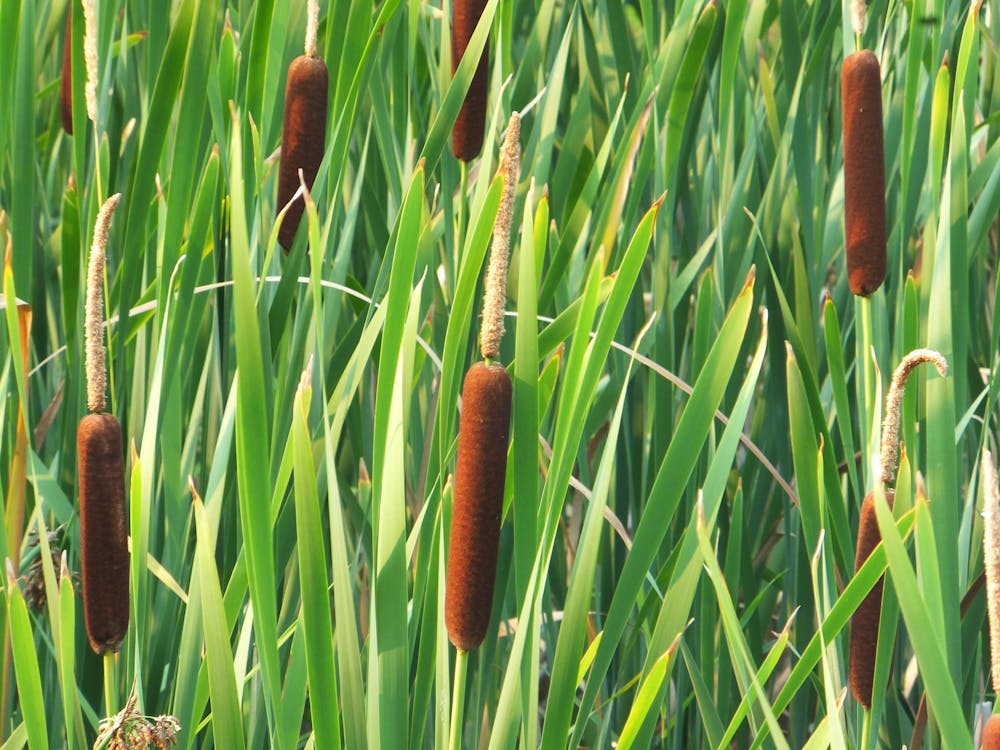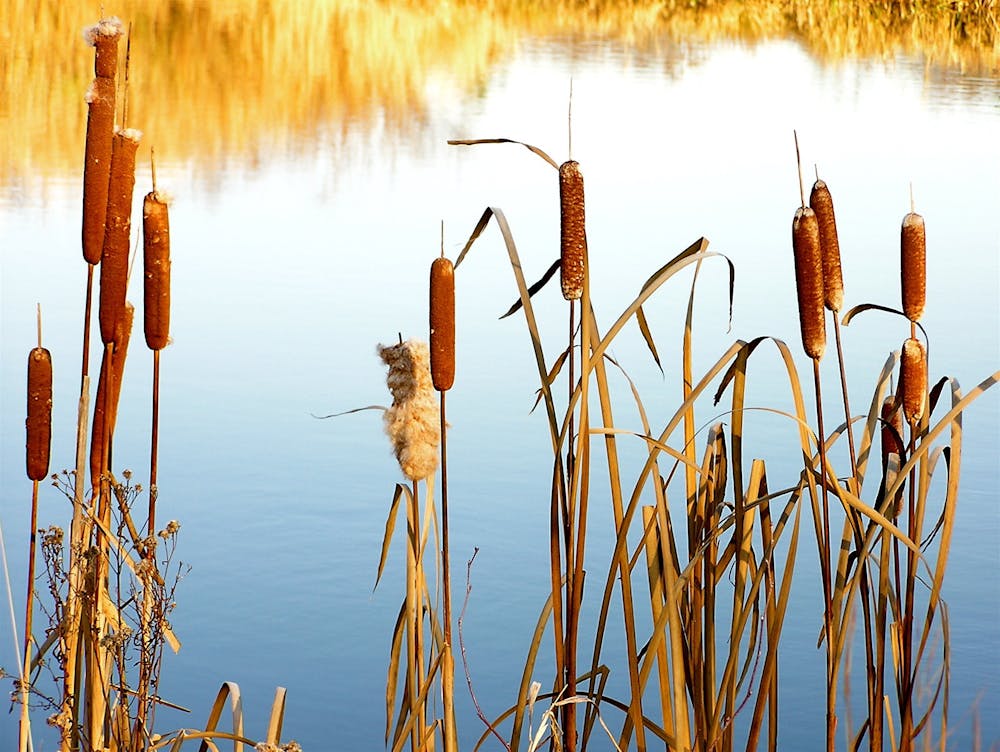By Mike Sherr
Editor-in-Chief
Plants can be complex and extremely intricate in order to fit perfectly in niche ecosystems. This can allow humans to use them in a variety of ways. Cattails (Typha latifolia) for example, can be used for just about any need. While they are edible, every part of these reeds can be used to make crafts or other useful items.
Like most plants, cattails are made up of roots, stems, leaves and flowers. The roots of the plant grow horizontally underwater in marshes and river edges. These roots can be ground up and made into a mashed potato like mush. By grinding and then boiling the roots, the starch is removed which allows the leftover mush to be made into pancakes or eaten as is.

The corn-like male cattail flowers starting to eject its pollen (Photo courtesy of Flickr / "cattails" by Travis Juntara. August 7, 2017).
The flowers at the top of a cattail are actually both female and male flowers. The male flower looks like a long stack at the top of the plant. The cattail will release pollen from this flower in order to reproduce with other nearby cattails. After all of the pollen is ejected, the hot dog looking female flower opens up to collect pollen from other cattails.
Both the male and female flowers are edible and can be harvested to make both side dishes and main courses.
Before the male flower ejects its pollen, foragers can collect the pollen and dry it out to use it in similar ways to flour or cornstarch. Dried out cattail pollen can be used to thicken gravies or can be used in baked goods. The flour itself has a yellow color which transfers over to any goods made with it. This pollen also is high in protein and can be useful for vegetarians or vegans who have to find alternate ways to gain protein.
Female flowers on the other hand can be collected and grilled, fried or baked to be eaten similarly to corn on the cob. When seasoned with salt and pepper and smeared with butter, these flowers also taste extremely similar to corn.
Pollinated female flowers generate fluff on the inside of the brown skin which can be used as an alternative to down or synthetic down in jackets, pillows or slippers. This “seed fluff” can also be used like cotton balls for cuts. The sap within cattails can also be used as an antiseptic which makes the “seed fluff” even more beneficial to use when there is an open wound.
Plants have a wide array of uses that we might not normally recognize in our society of instant gratification and technology. By slowing down a bit and trying to make more of what we use, we might be able to relearn a lot of this forgotten knowledge about the world around us.




